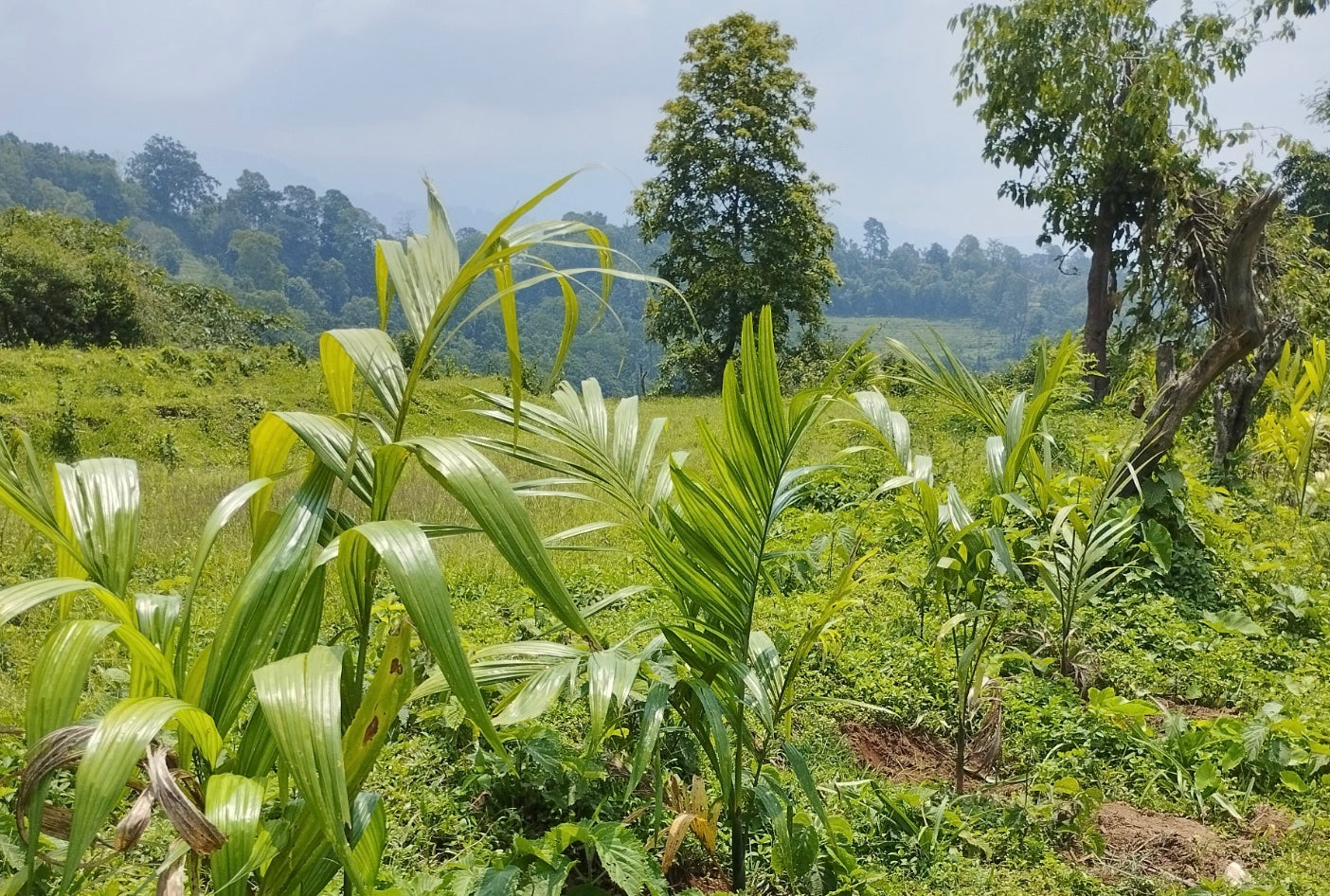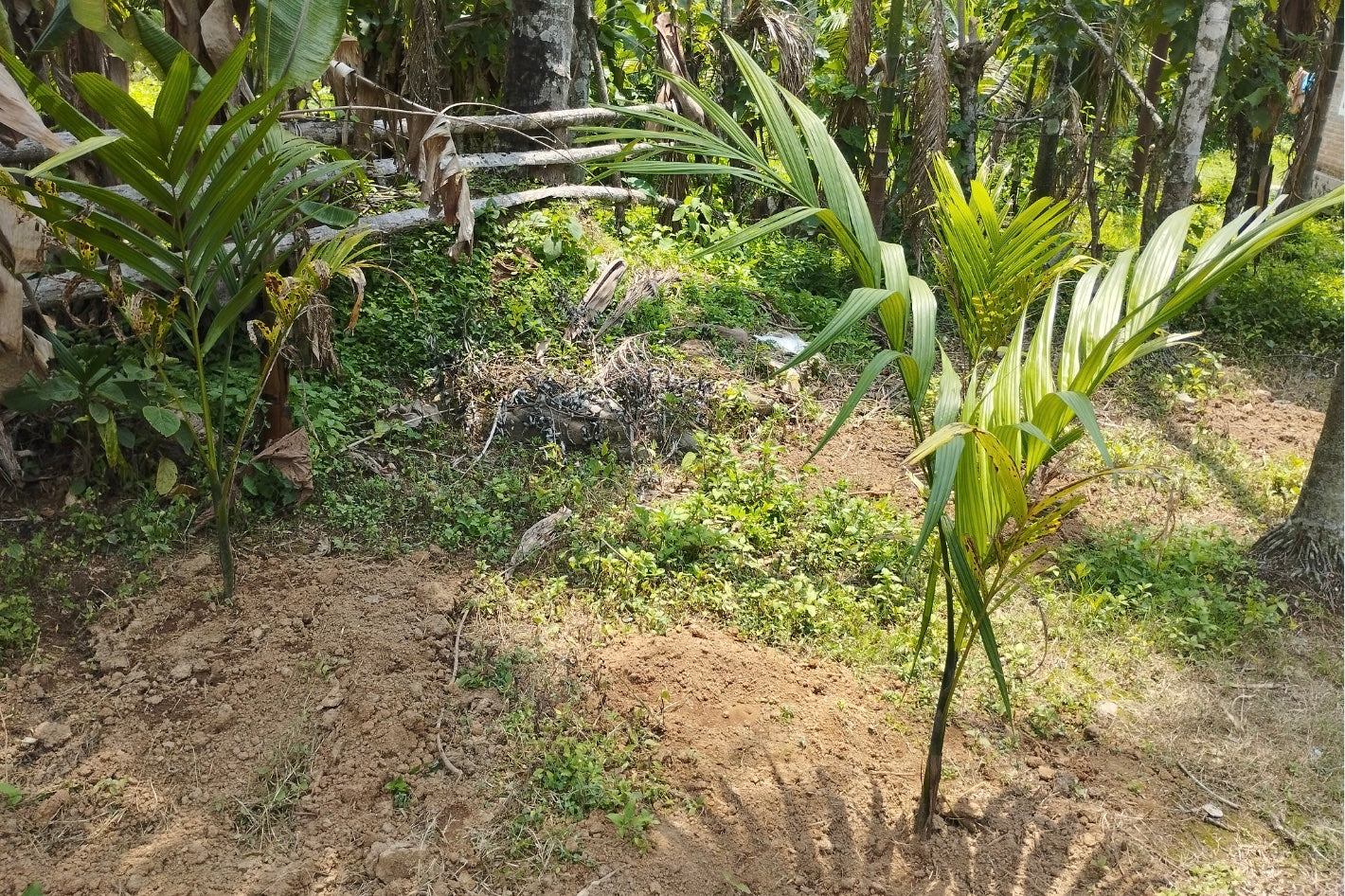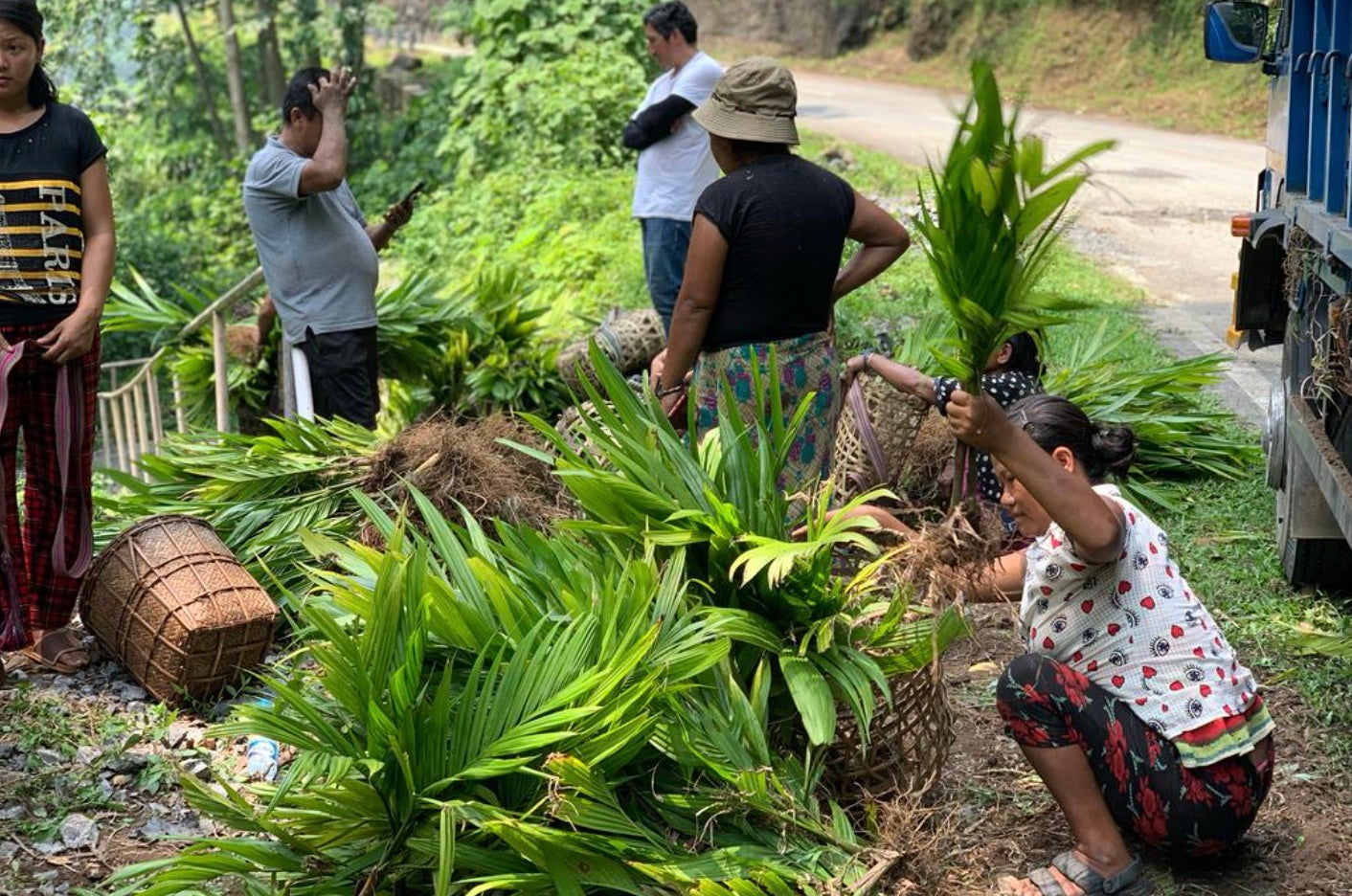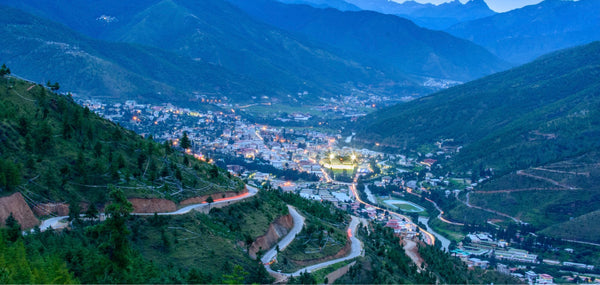
Get news, updates, & event Info delivered right to your inbox:
LAND RESTORATION FOR NATURE AND PEOPLE IN BHUTAN
Sitting on the southern slope of the Eastern Himalayas, Bhutan’s land area encompasses 38,394 sq km. The country is almost entirely mountainous, with altitudes ranging from around 100 meters in the foothills to over 7,500 meters in the north. Due to this varying topography, it has three climatic zones: southern Subtropical foothills characterized by high humidity and heavy rainfall, central temperate valley with cool winters, hot summers, and moderate rainfall, and high Alpine mountains with cold winters and cool summers.
Of Bhutan’s land area, 71% is forested (2,730,889 ha). Bhutan’s forests are classified into 11 types: subtropical forests, warm broad-leaved forests, Chir Pine forests, cool broad-leaved forests, evergreen Oak forests, Blue Pine forests, spruce forests, hemlock forests, fir forests, Juniper Rhododendron scrubs, and dry spline scrubs. The most commonly occurring forest types are cool broad-leaved (26%) and warm broad-leaved (18%). This extensive forest cover can be attributed to consistent conservation and management. The conservation and protection of the natural environment are written into their constitution. This means the country boasts exceptionally rich biodiversity, with healthy populations of some of the rarest species on earth.
Despite these incredible natural resources, Bhutan’s forests are under threat from a range of factors that include forest degradation and timber extraction, climate change, illegal trade and poaching, human-wildlife conflict, forest fires, dependency on forest resources for subsistence, and lack of resources for research and capacity-building. Underlining these threats, 62.2% of the entire population of Bhutan are classified as rural dwellers and directly or indirectly depend on forests for their livelihoods. This high dependency on natural resources for survival exerts intense pressure on these resources.
Emphasizing the issue, just 3.7% of Bhutan’s total land cover is available and arable. Almost 25% of available arable land is left fallow due to a shortage of farm labor, water scarcity, and human–wildlife conflict. Due to their many challenges, people in rural areas are compelled to move to urban areas for employment and better livelihood opportunities. To help address this and improve rural livelihoods, our reforestation partner is actively working to promote and cultivate high-value trees and associated crops in at least 10%, about 2200 hectares, of fallow land over the next decade.
This project, which emphasizes land restoration for nature and people, is planting high-value fruit and timber trees on fallow land and degraded land as part of this overall effort.

THE POWER OF LAND RESTORATION
This project is split between two main planting areas: fallow and degraded land. Fallow lands are used in agriculture but are uncropped for one or more seasons throughout the year. Degraded lands have lost some of their natural productivity –– typically due to human behavior.
Growing areas of fallow farmland, characterized by dense undergrowth, attract more wild animals to farming areas. This increases human-wildlife conflict and greatly impacts crop production. It also increases food insecurity by making it harder for rural communities that depend on the land to grow and access adequate nutrition.
To help address these factors, this project planted high-value fruit and timber trees on fallow land in rural areas and urban peripheries to generate cash income and reduce poverty. Fruit trees were also planted across degraded lands to provide sustenance for animals, reducing the risk of human-animal conflict.
By planting trees across these lands, not only will the degraded lands boost natural productivity, but the fallow lands will become more productive, boosting crop yields over time.

ECOLOGICAL BENEFITS
By planting trees to restore landscapes, this project will bring in a host of environmental benefits with each tree planted. From storing carbon to protecting watersheds, these trees will play a vital role in the environment around them.
Bhutan has one of the world’s highest per capita water availability, yet households and communities suffer from acute water shortages for drinking and agriculture. As degraded and fallow lands are reforested, watersheds and spring sheds will be conserved, helping to sustain supplies of water. In areas where water is scarce, the project will help retain water through the revival of headwaters via watershed and springshed management.
The goal of this project is also to help reduce the rampant human-wildlife conflict across rural Bhutan. By restoring forests, wildlife will benefit from increased habitat and sustenance, reducing the need for them to venture into agricultural areas for the resources they need. With climate change impacts only growing, Bhutan’s people and wildlife are on the front lines. These trees will help improve their lives and livelihoods over time.

IMPACTING COMMUNITIES
With a diversified planting of fruit and timber trees, many farming families will benefit from this project. Planting fruit trees on community farmers’ land will help increase their income through the sale of fruits and harvesting timbers, enhancing their livelihoods over time.
The project also emphasizes creating jobs for local youth, allowing them to earn while working on the planting locations. This also empowered them to make an impact in their local communities and environments.
While supporting Bhutan’s rural farmers is crucial, this project will also help other families. By improving air quality and conserving soil and water quality, many people in the neighboring community will benefit from the trees planted in this project. It is a win-win for both communities and the environment!
Bhutan’s unique landscape is home to incredible biodiversity and resilient rural communities. By planting trees in Bhutan, we can make a lasting impact. Plant a tree in Bhutan today!
